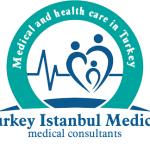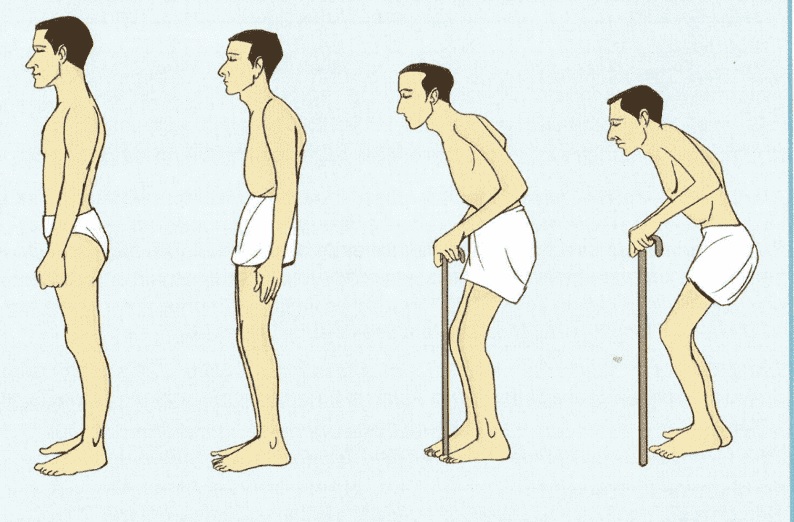What is Humpback (Ankylosing Spondylitis)?
Ankylosing spondylitis, also known as humpback. It is a disease that can cause a number of vertebrae in the spine of an individual to fuse with each other over time. As a result of this fusion, the spine begins to become less flexible.
The normal posture of the individual may become forward-leaning. The ribs can be affected by inflammation leading to ankylosing spondylitis. In this situation, it can be very difficult for individuals to breathe deeply.
It is more common in men. Signs and symptoms of the disease typically begin to appear in early adulthood. Unfortunately, there is no definitive and permanent cure for ankylosing spondylitis. However, there are a number of treatments available to reduce symptoms and slow the progression of the disease.
What Causes Humpback (Ankylosing Spondylitis)?
A specific known cause of ankylosing spondylitis has not yet been identified. However, experts think that various hereditary factors play a role. In particular, individuals with a gene called hla-b27 appear to have a greatly increased risk of developing ankylosing spondylitis.
Men are more likely than women to develop ankylosing spondylitis. In addition, the onset of the disease usually occurs in late adolescence or early adulthood.
What Complications Can Occur?
In severe cases of ankylosing spondylitis, new bone tissue is formed as part of the body’s attempt to heal damaged bone structures. This newly emerging bone tissue gradually covers the space between the vertebrae. Eventually it joins the vertebral segments in a way that hinders natural movement. These parts of an individual’s spine become stiff and lose their flexibility. The combination can also stiffen an individual’s rib cage, limiting lung capacity and function.
One of the most common complications of ankylosing spondylitis, uveitis can cause sudden onset and rapidly developing eye pain, sensitivity to strong light, and sudden blurred vision. Individuals showing these symptoms should consult an ophthalmologist as soon as possible.
In some cases, individuals’ bones become thinner in the early stages of ankylosing spondylitis. Weakened vertebrae fragment and can aggravate an individual’s oblique posture. This fragmentation is called compression fracture. Spinal fractures that occur can potentially cause significant damage by putting pressure on the spinal cord and nerves running through the spine.
Ankylosing spondylitis can cause problems with the aorta, the largest artery in the human body. The inflamed aorta may tend to enlarge enough to distort the shape and function of the aortic valve in the heart.
What are The Symptoms of Humpback (Ankylosing Spondylitis)?
Early symptoms include pain and stiffness around the waist and hips, especially in the morning and after periods of inactivity such as sitting for a long time. Neck pain and fatigue are also common symptoms. The signs and symptoms of the disease may worsen, aggravate, alleviate, or cease altogether, occurring at irregular intervals over time.
It may be necessary to seek medical attention if an individual has low back or hip pain that normally starts very mildly, especially worse in the morning, or may wake you up in the second half of the night.
Another symptom of the condition is that these pains decrease with exercise and worsen with rest. Individuals who develop painful redness of the eyes, severe sensitivity to light or blurred vision are advised to consult an eye specialist immediately.
How is Humpback (Ankylosing Spondylitis) Diagnosed?
The doctor first performs a physical examination. During this time, he may ask the person to bend in different directions to test the range of motion in the person’s spine.
In addition, the person presses on certain areas of his pelvis or brings his legs to a certain position. And it may try to reproduce the pain.
The doctor may also ask the person to take a deep breath to see if the person has difficulty inflating their chest while breathing.
Imaging tests can help doctors. X-rays to be taken allow the doctor to check for changes in the individual’s joints and bones.
However, in the early stages of the disease, it may not be obvious enough to be seen on X-ray.
Magnetic resonance imaging, or MRI, can reveal evidence of ankylosing spondylitis early in the disease process. Slower treatment may start earlier.
How is Humpback (Ankylosing Spondylitis) Treated?
The aim of the treatment of ankylosing spondylitis disease is primarily to relieve pain and stiffness, which are among the symptoms of the disease, and to prevent or delay the development of various complications related to the disease, especially spinal deformity.
Non-steroidal anti-inflammatory drugs are most commonly used by medical professionals in the treatment of ankylosing spondylitis. These types of drugs can relieve inflammation, pain, and stiffness in the individual.
Complementary Treatment at Home
There are several steps that individuals with ankylosing spondylitis can take to help their condition, in addition to visiting their doctor regularly and taking their medication regularly as prescribed.
The most important of these is to stay active. Regular exercise can help relieve pain, maintain flexibility, and improve posture.
Heat compresses applied to stiff joints and tense muscles can relieve pain and stiffness. Warm baths and showers with heating pads or hot towels can help the individual. In addition, ice packs that can be placed on inflamed areas can help reduce swelling.
Ankylosing spondylitis patients should not smoke. Since AS disease compresses the lungs and makes it difficult to breathe, not breathing fresh air in smokers can cause extra problems.
Correcting the posture is important. Standing in front of a mirror and practicing to correct posture can prevent an individual from developing some of the problems and complications associated with ankylosing spondylitis.

